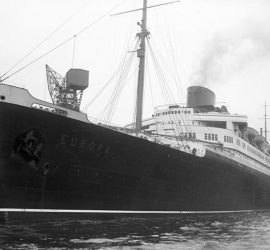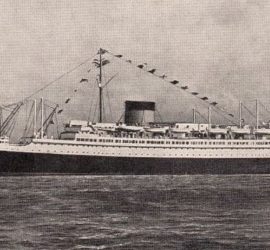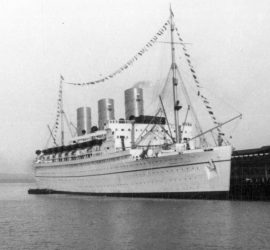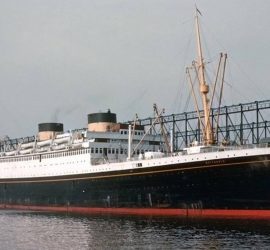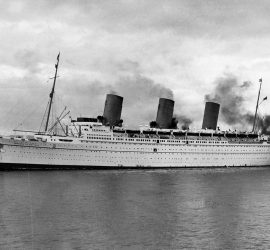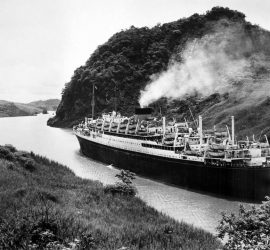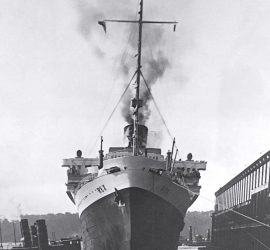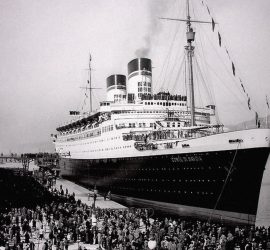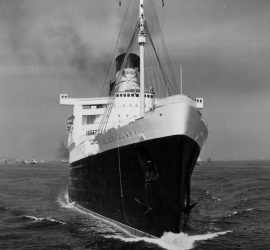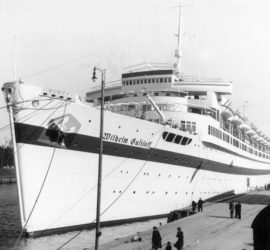1930 – 1962 / Also known as Liberté / Also a Blue Riband champion, the Europa enjoyed a longer career than her sister Bremen. After World War II, she was handed over to the French and became the much-loved Liberté. In this guise, she sailed into the 60s.
Monthly archives: April 2018
1930 – 1938 / Although a less glamorous ship of the French Line, the Lafayette was still known for her comfort and modern design. Unfortunately, her career was cut short by fire in 1938.
1930 – 1966 / Also known as Empress of Scotland (II) and Hanseatic (I) / Built during the interwar years, the second Empress of Japan was the fastest and largest Pacific liner of her time. She served in both peace and war, and was then given an extensive refit and saw a second career as the Hanseatic.
1930 – 1960 / White Star modernised their fleet with the third Britannic, the first British motor ship on the North Atlantic. After trooping duties during World War II, she had a prosperous post-war career, and she is noteworthy for being the last remaining liner of the White Star Line at the time of her retirement.
1931 – 1940 / Launched as the Canadian-Pacific Line’s largest ship to date, the second Empress of Britain quickly became a popular ship for both crossings and cruises. Sadly, her career was cut short by World War II, when she was torpedoed and sunk while employed as an allied troop transport.
1932 – 1956 / The second vessel of White Star’s modern pair of motor ships, the Georgic was to be one of the last ships to sport the company livery. Bombed and badly damaged during World War II, the ship was refitted and emerged with a single funnel after the conflict. She was sent to the breakers in 1956.
1932 – 1944 / Built to be the pride of Italy, the Rex was a greyhound that managed to capture the Blue Riband. Her career was however stifled by the second world war, during which she was bombed and sunk by British aircraft.
1932 – 1950 / Another Italian showpiece, the Conte di Savoia was noted for her lavish interiors, which deviated from the modern trends of her era. Bombed and sunk during World War II, she was too heavily damaged to be salvaged, and was dismantled after the war.
1936 – Present Day / Perhaps the most famous ship of all time, rivalled only by the Titanic, Queen Mary was the national symbol that inspired Great Britain’s struggle out of the great depression. She performed invaluable trooping duties during World War II, commanded the North Atlantic in the 50s, and is still with us today in Long Beach, California.
1938 – 1945 / Sprung from the Nazi scheme ‘Kraft durch Freude’, the Wilhelm Gustloff was built to offer German workers affordable cruises, keeping them happy and productive. Sadly, the ship’s name is today linked with tragedy, as she was sunk with enormous loss of life in the final days of World War II.

